Setup time: 5 Min
1. Create Your Microsoft Azure Monitor Integration on All Quiet
Login into your All Quiet account.Create Microsoft Azure Monitor Integration
- Click on the
Integrations > InboundTab. - Click on
Create New Integration.
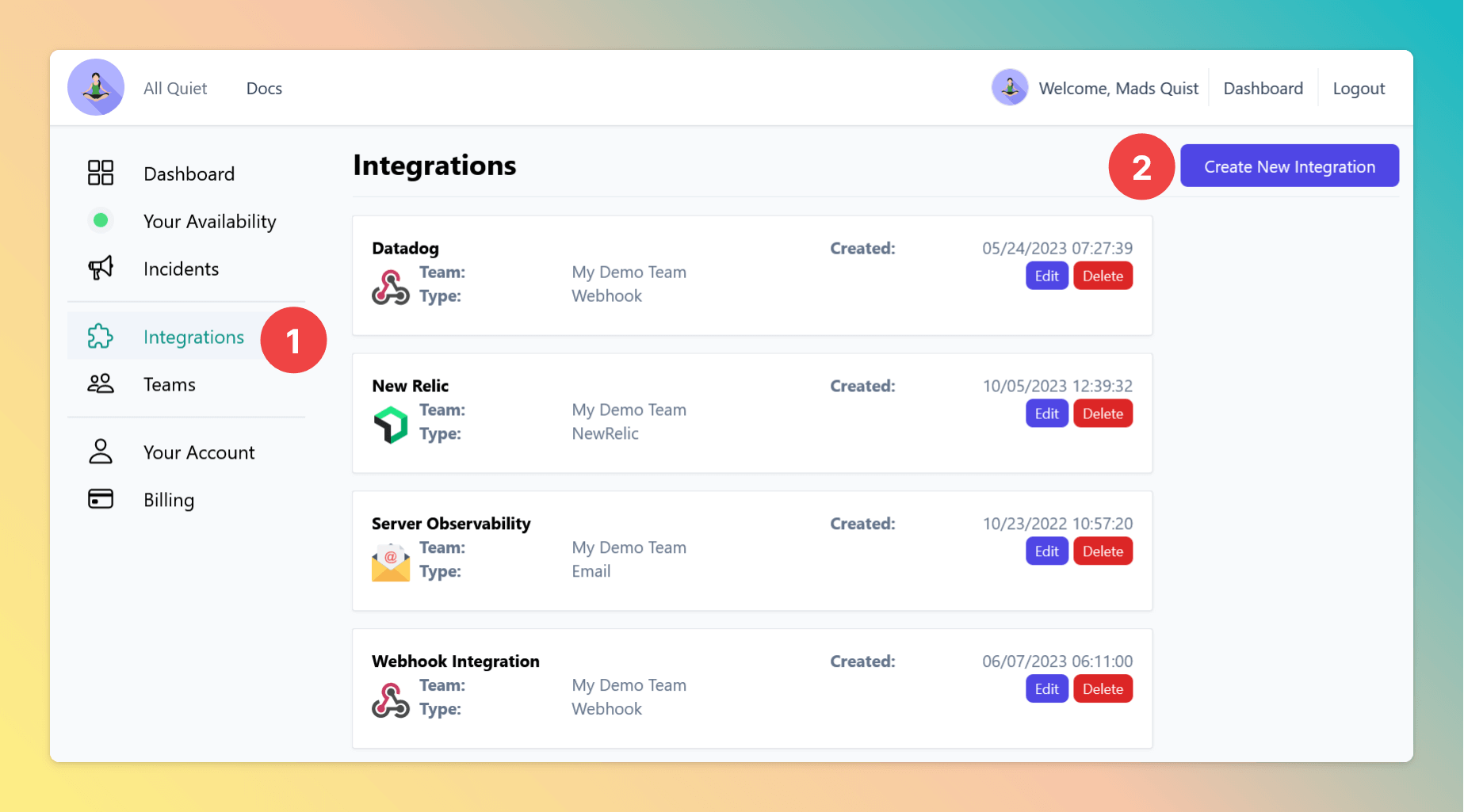
- Enter a display name for your integration, e.g. “My Azure Monitor”.
- Select a team.
- Select “AWS Amazon CloudWatch” as the type.
- Click
Create integration.
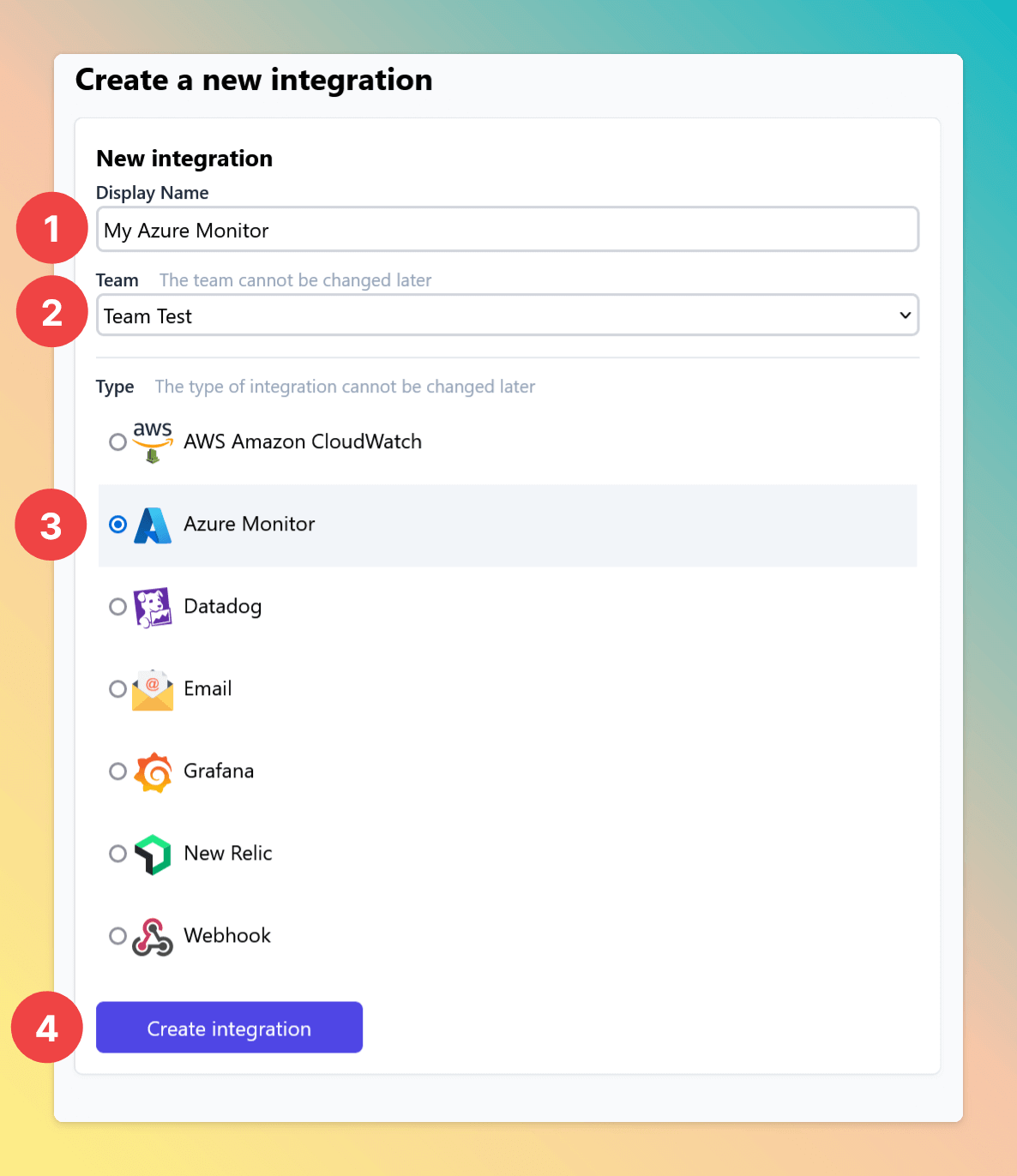
Copy Webhook URL
Now that you’ve successfully created your Microsoft Azure Monitor Integration, ensure you copy the webhook URL for use later when setting up your Azure Action Group.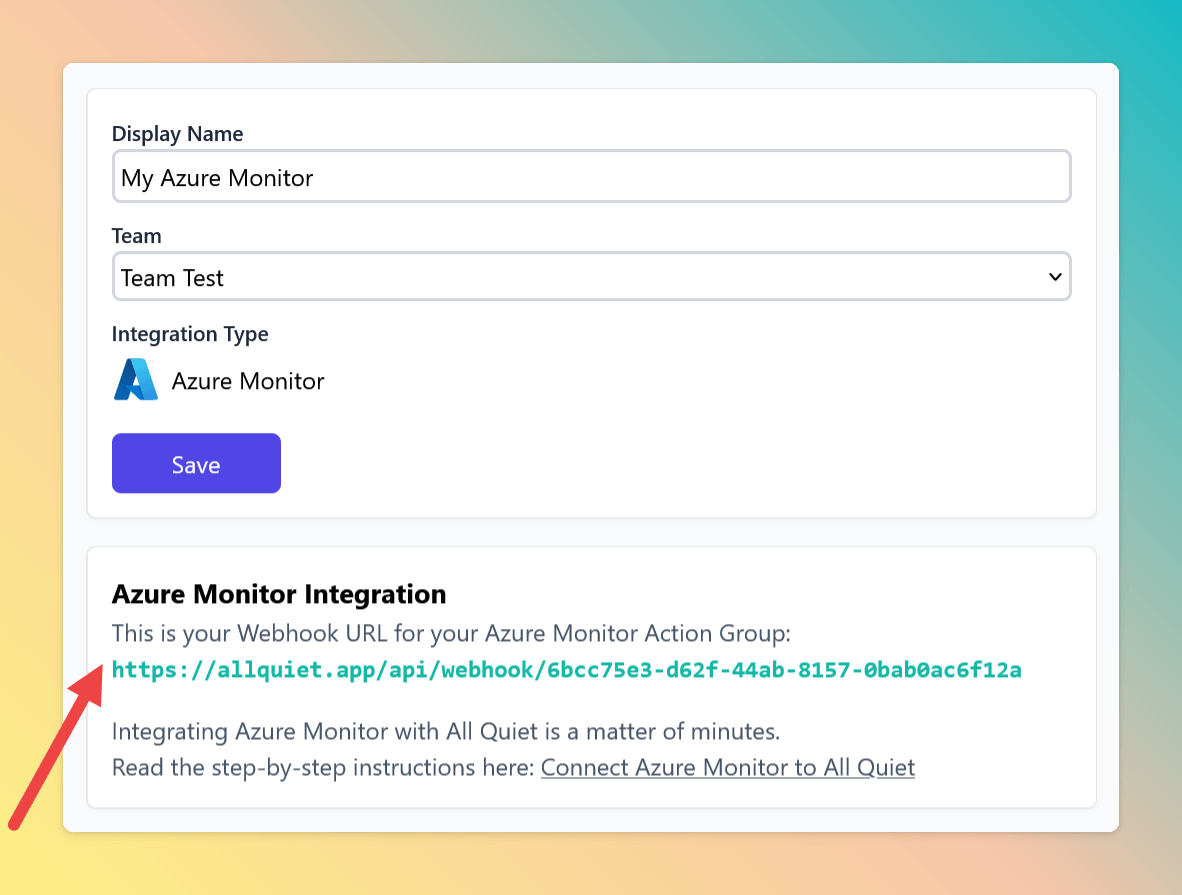
2. Setup Your Azure Monitor
Login into your Microsoft Azure portal.Create Action Group
- Navigate to Azure services > Monitor
- Click on
Alerts - Click on `Action groups to manage your action groups within Azure Monitor.
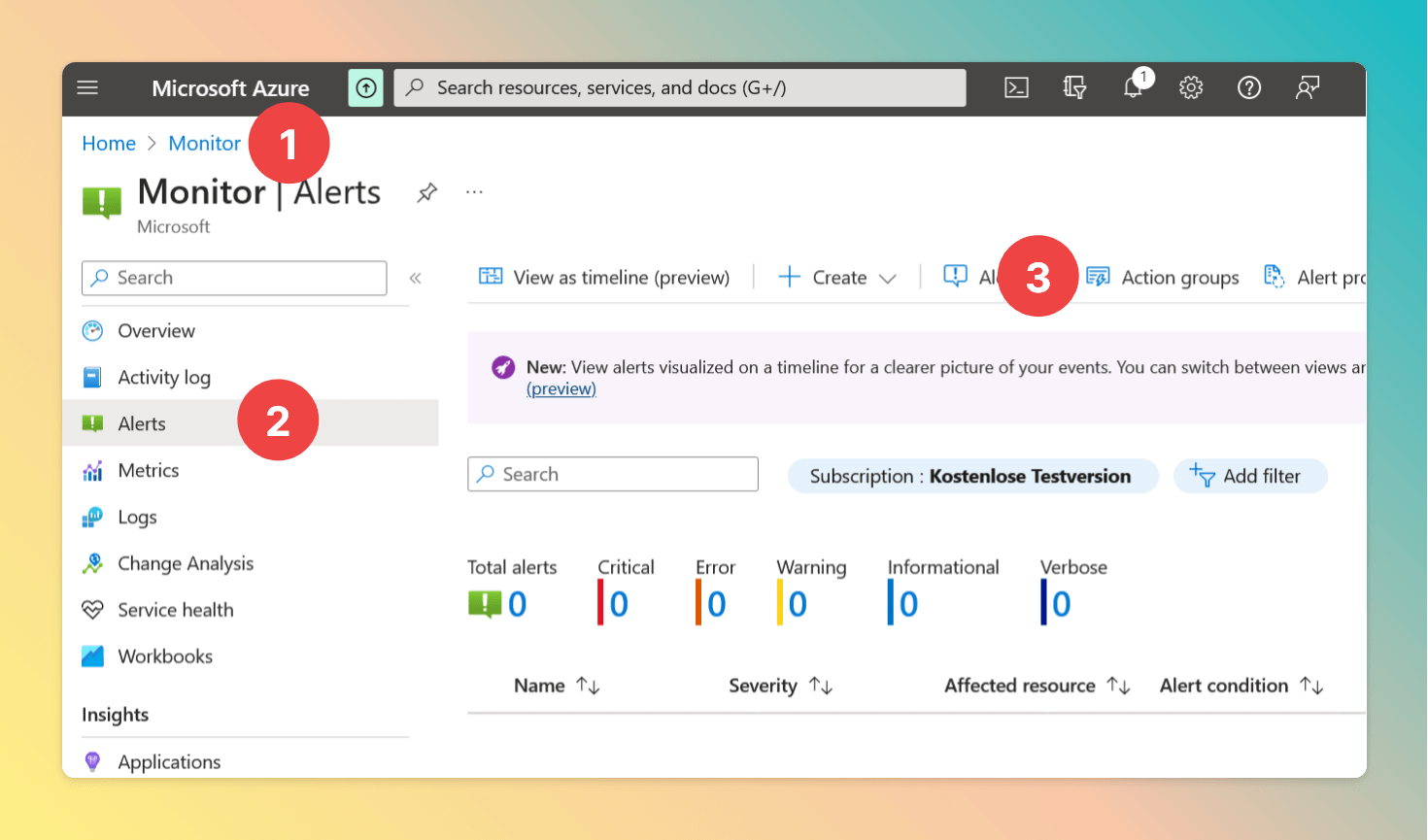
+ Create to create a new action group.
You can also utilize one of your existing action groups to configure a webhook action for ‘All Quiet’.
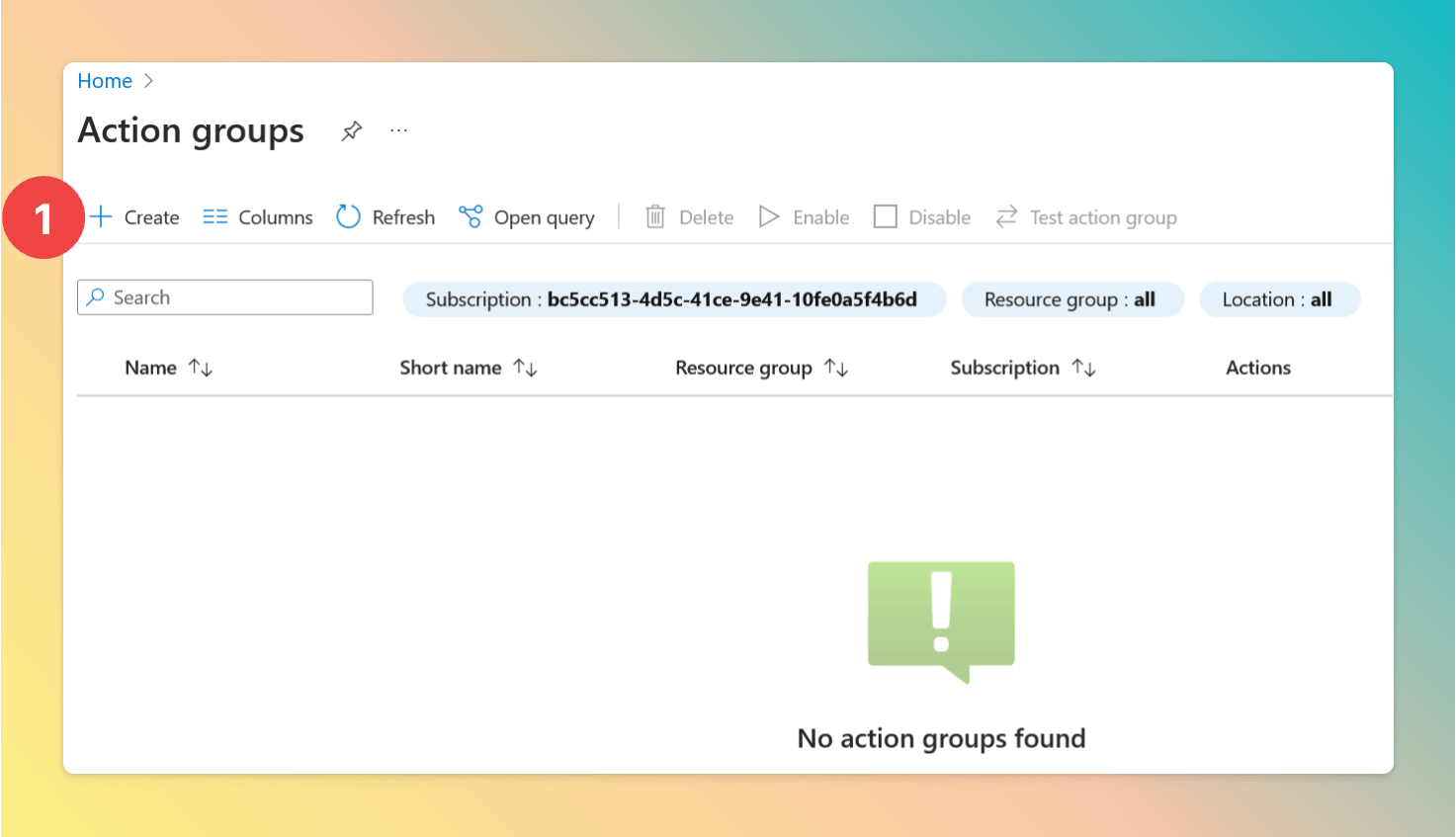
- Navigate to the Basics tab of the Create action group section.
- Under Project details, select a Resource group.
- Choose a Region from the dropdown.
- In the Instance details section, enter a name for the Action group name.
- Provide a Display name for the action group.
- Click on the Actions tab to proceed to the next step.
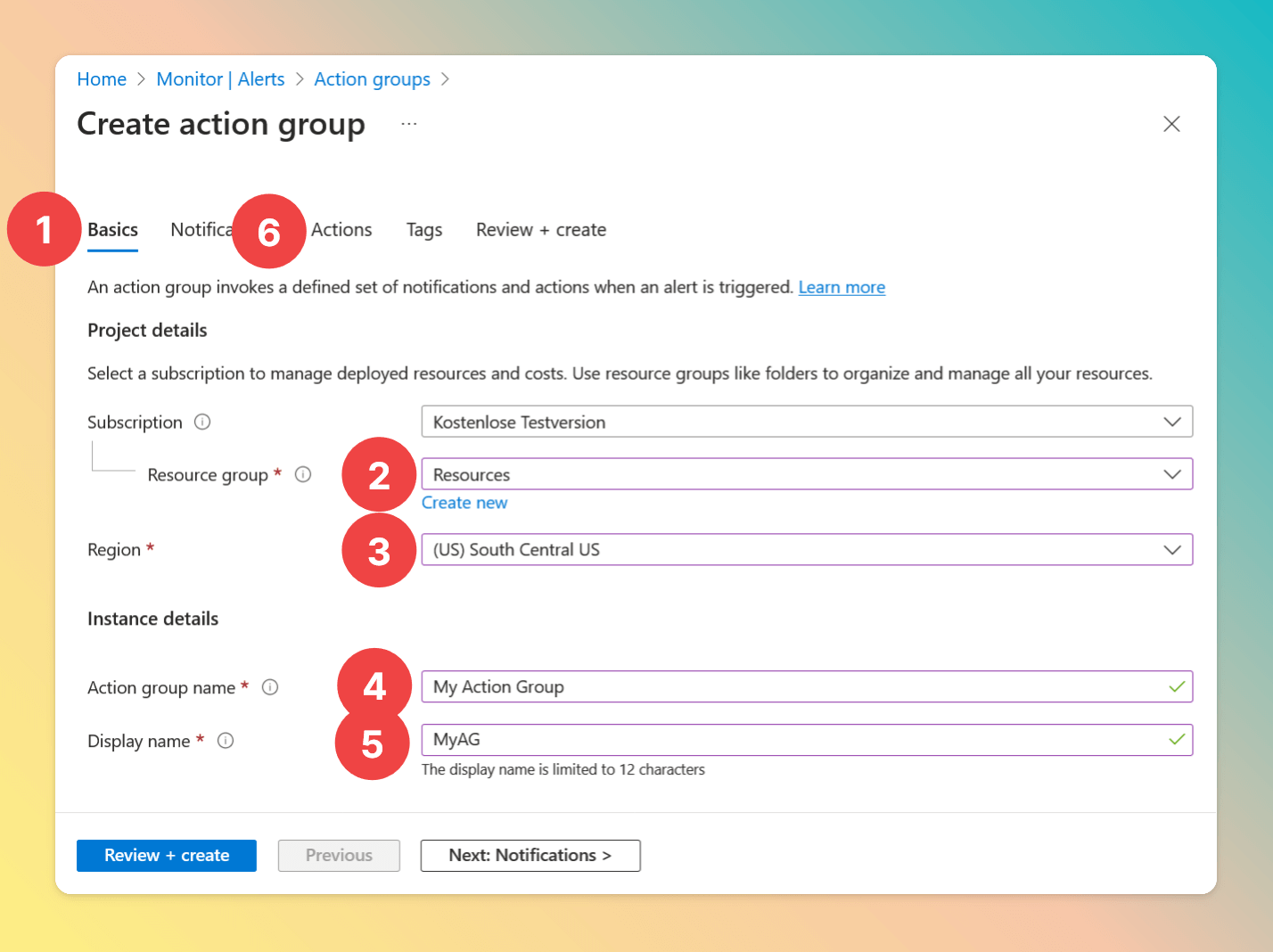
Configure Actions
- Navigate to the Actions tab.
- Select the Action type dropdown and choose Webhook.
- Provide a name for the action in the Name field, for example, “All Quiet”.
- Click on the edit button (represented by a pencil icon) to configure the webhook settings.
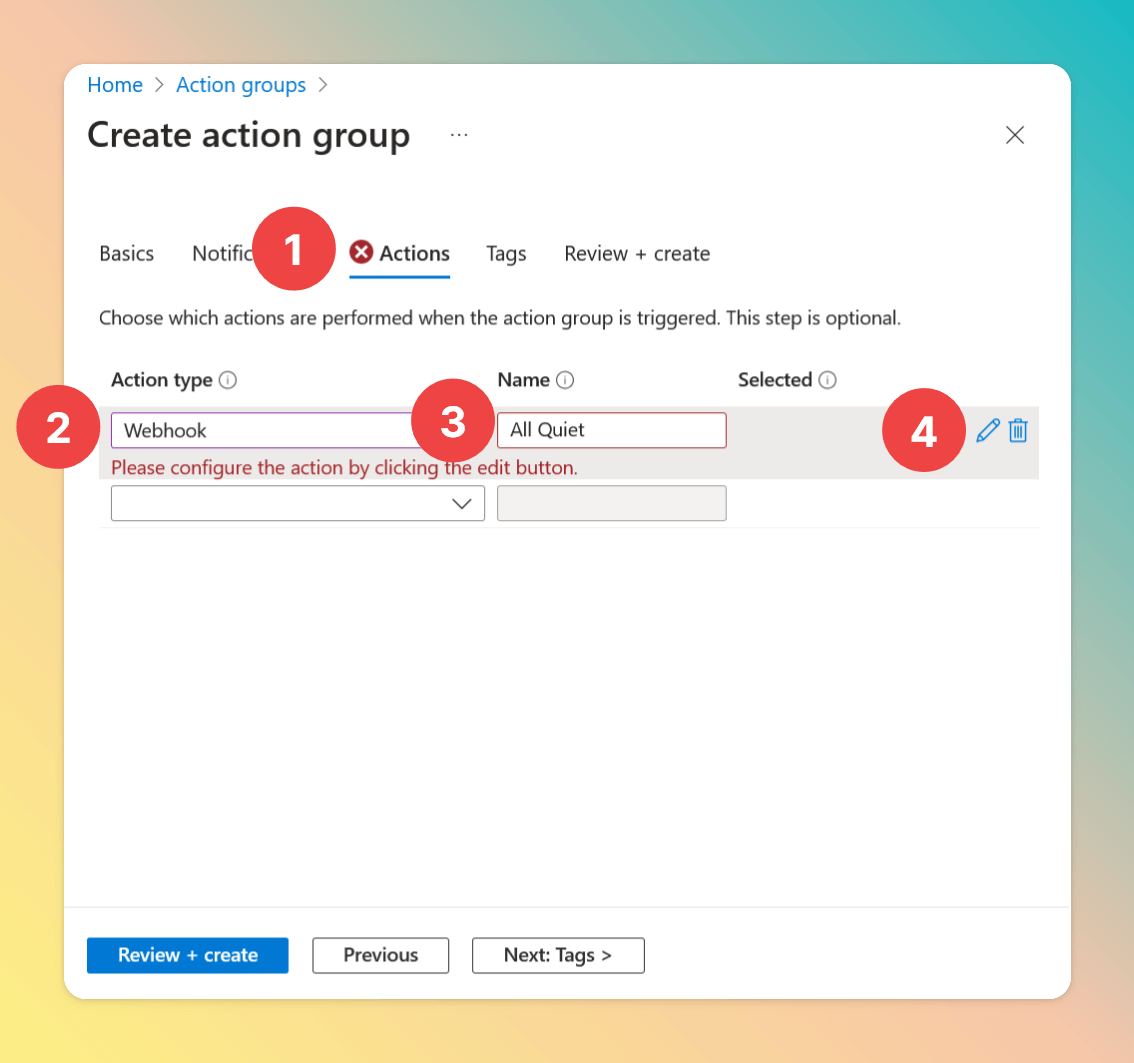
- Enter your Webhook URL in the URL field that you’ve created in Copy Webhook URL.
- Enable the common alert schema by selecting Yes.
- Click the OK button to confirm and close the popup.
- After configuring, proceed by clicking the Review + create button to finalize the action group creation.
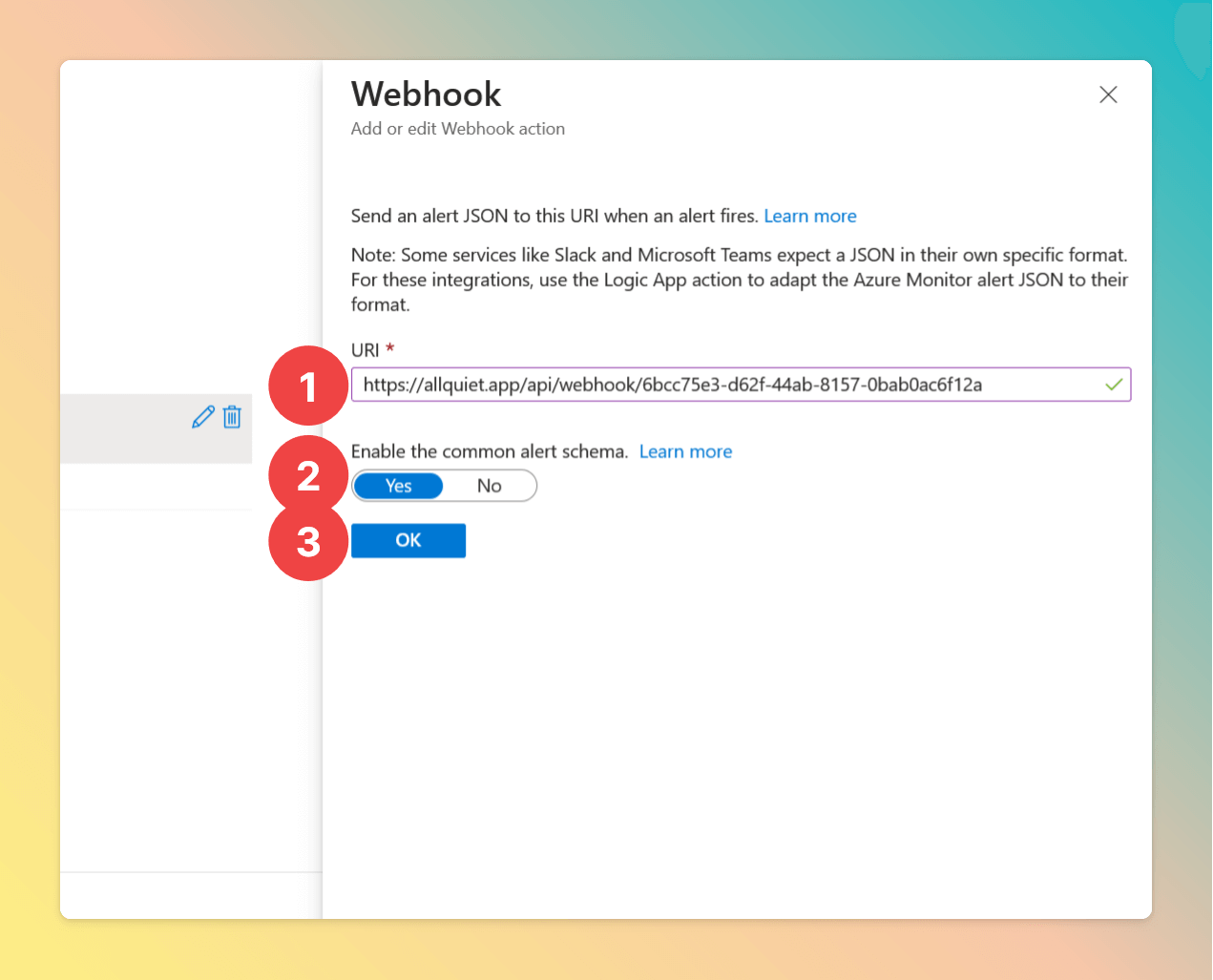
3. Test Your Microsoft Azure Monitor Integration
You’re almost done. 🥳 The next steps are merely there to verify if everything’s setup correctly!- After creating the Action Group, you’ll be redirected to the list of action groups. Choose the action group you just created.
- Click on “Test action group”.
- In the right pane, choose a sample type, such as “Metric alert - Dynamic Threshold”.
- Select the webhook action you created, as mentioned in Create Action Group.
- Click “Test”.
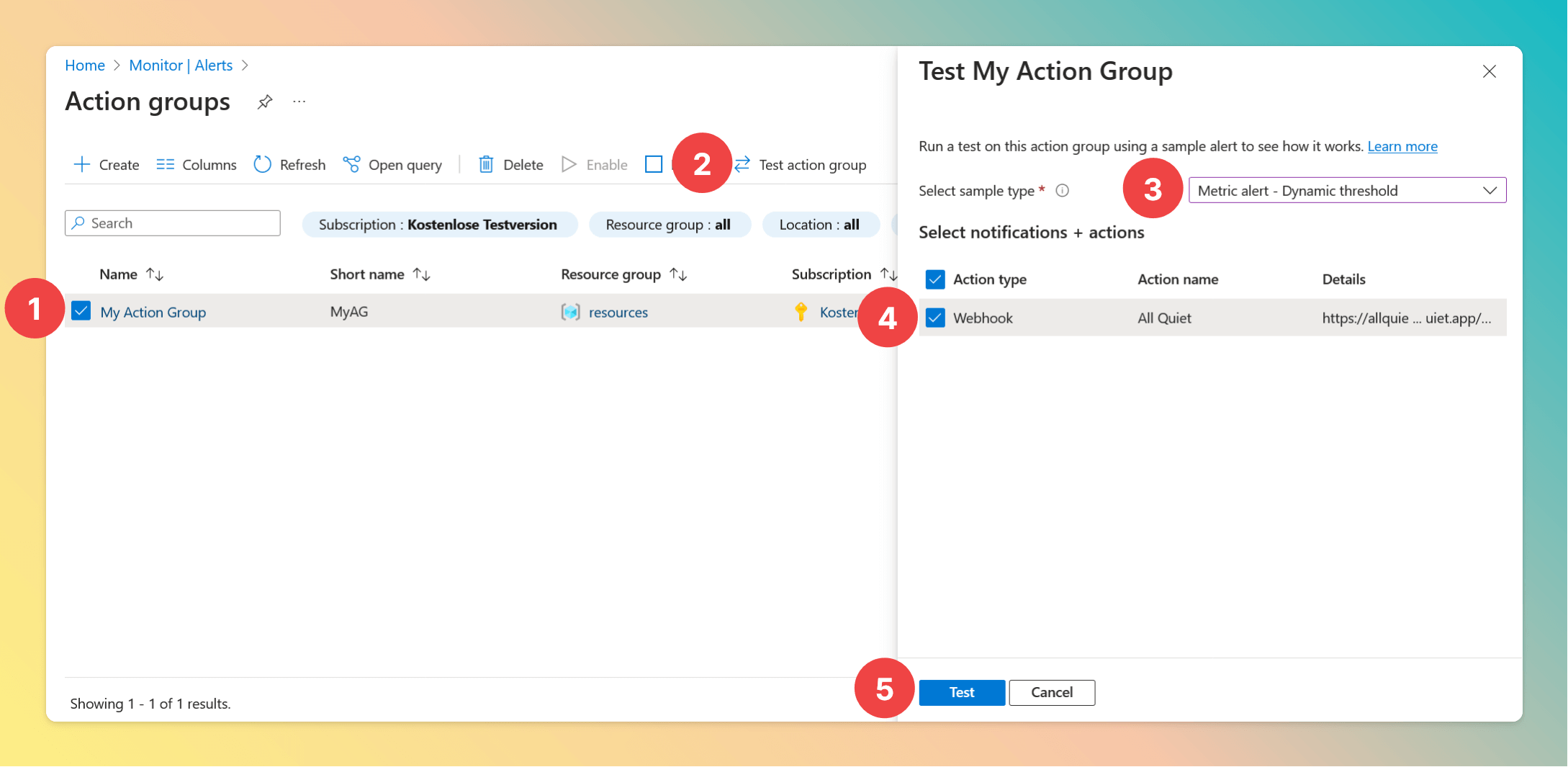
- Click
Reloadto load your most recent payloads. - Click
← Selectto load the test payload from the previous step. - Observe how the mapping transforms the Microsoft Azure Monitor payload into an All Quiet incident.
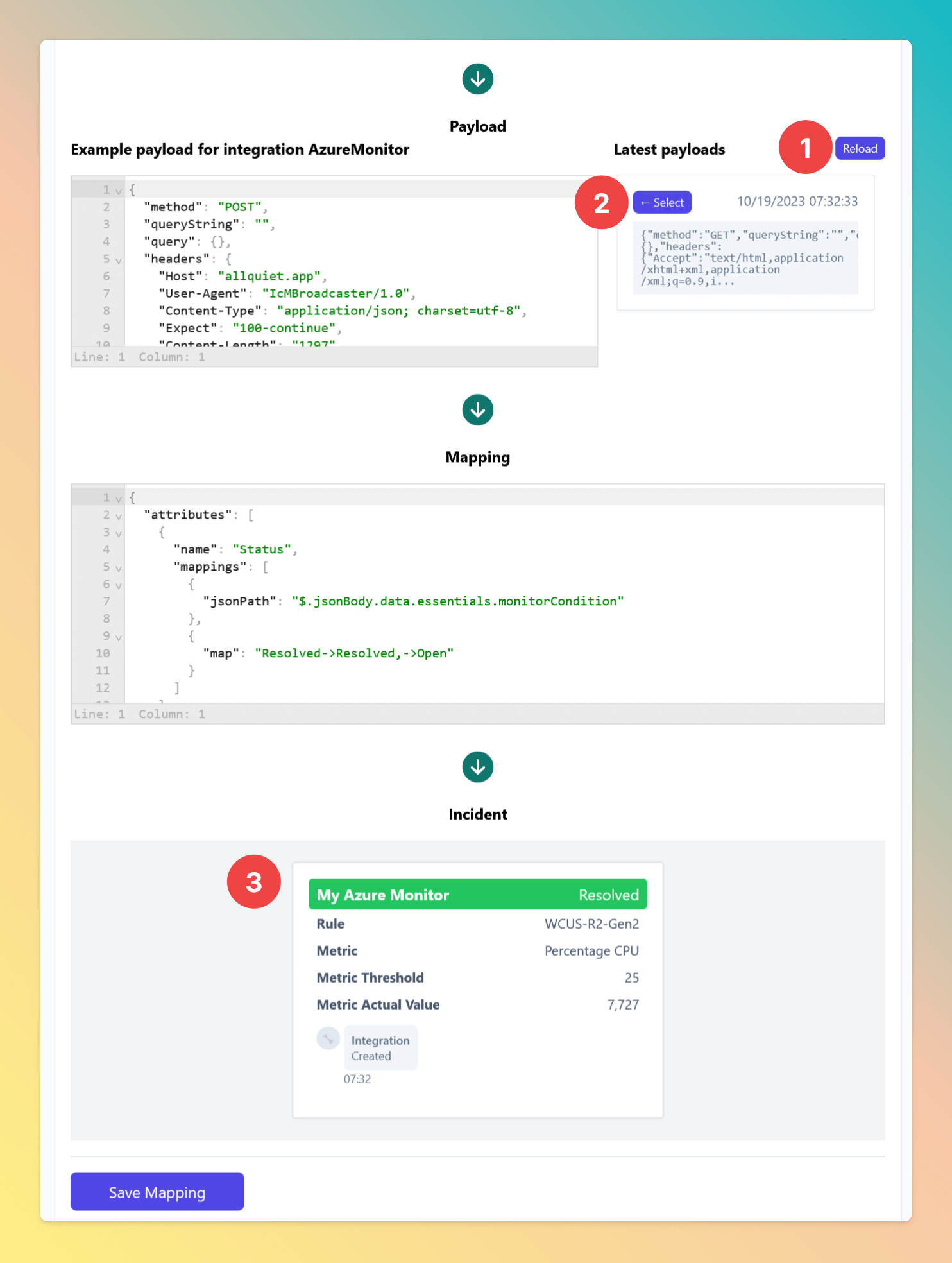
Microsoft Azure Monitor is now successfully integrated with All Quiet, enhancing your incident management capabilities.